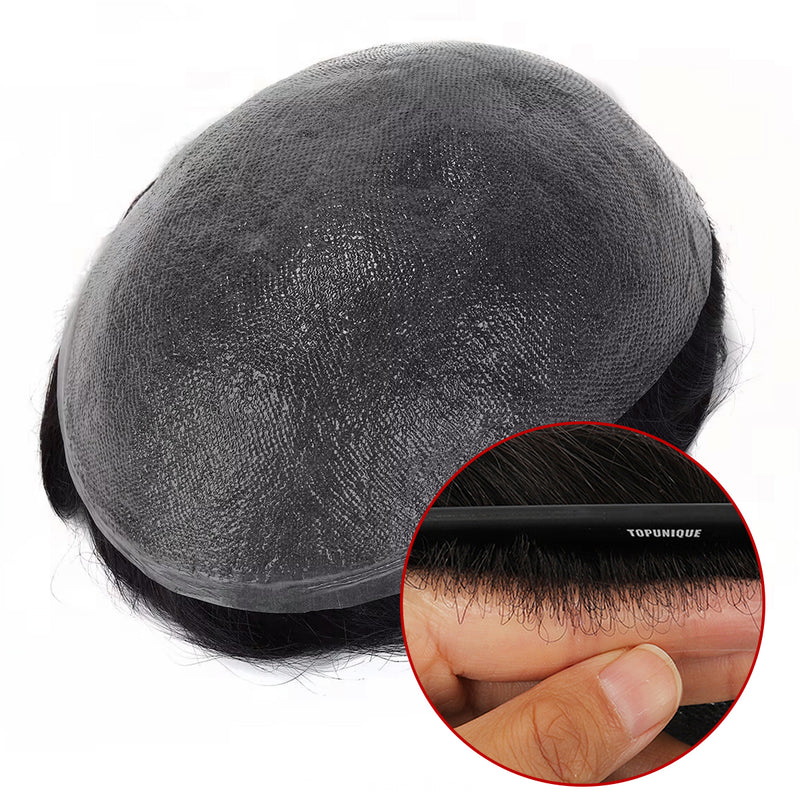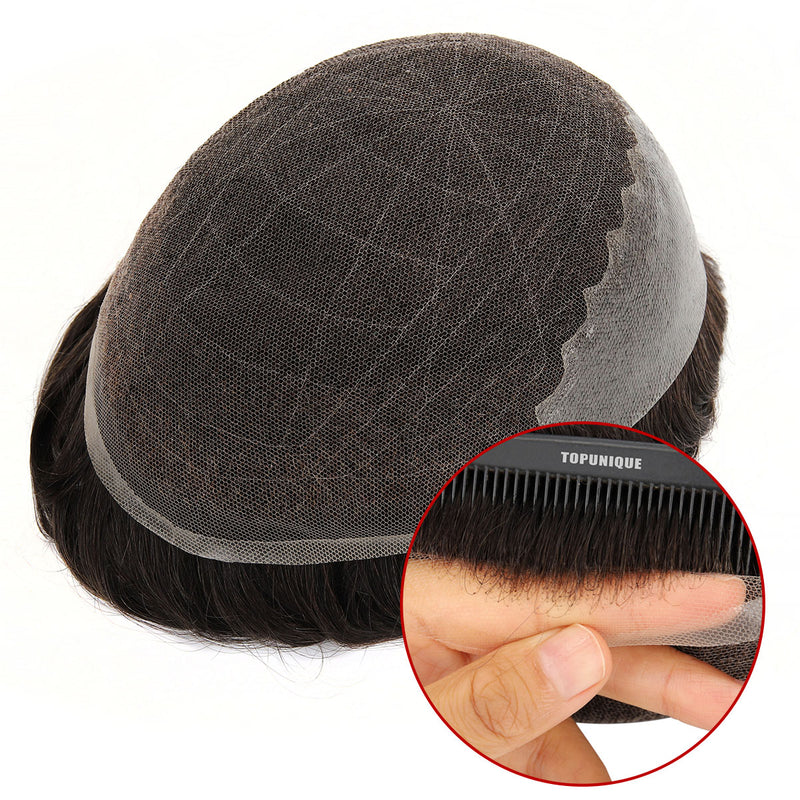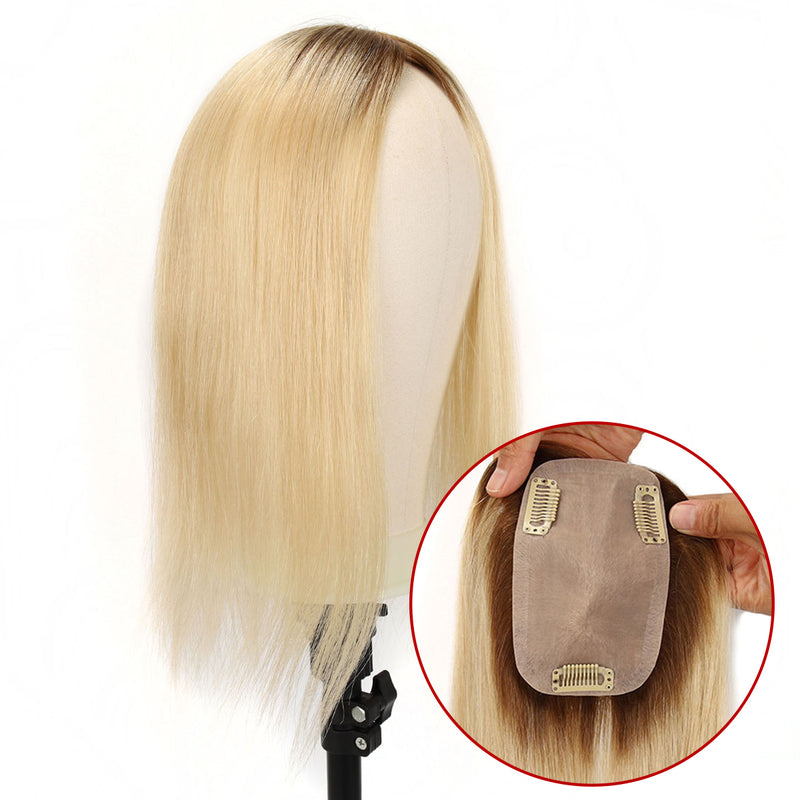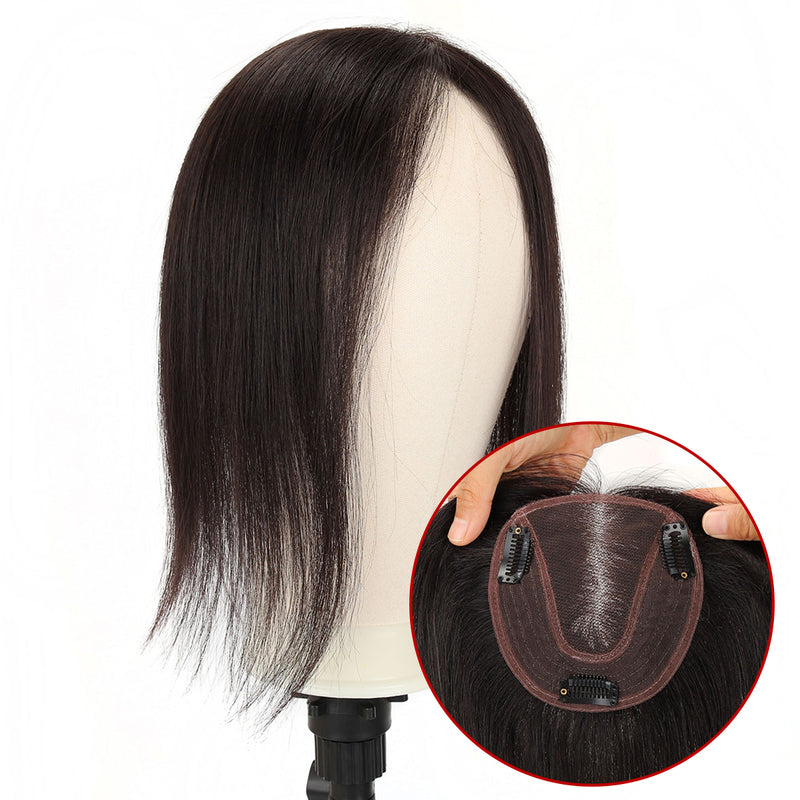Table of Contents

Wigs have a fascinating history, beginning in Ancient Egypt around 3400 BC. Wearing wigs was neither simply a fashion accessory then, but a social status difference in those days. The Egyptians used them for specific practical purposes. They kept their heads shaved to beat the heat and avoid pesky lice. Where did wigs originate? The origin of the wig is unclear, but it is a fact that it was a favorite among the elite. Both elite women and men fell in love with these fancy-looking hairstyles. They decorated them with beads and gold. We know this because archaeologists have found wigs in ancient mummy wrappings. These early wigs were crafted from a variety of materials. People used human hair, animal hair, palm leaf fibers, and even wool.
Ancient Origins of Hairpieces

The Egyptian wigs have left us an incredible legacy. Their intricate wig-making techniques demonstrate the exceptional skill of these ancient craftspeople. Egyptian wig history reveals these weren't mere accessories. They were powerful status symbols. Pharaohs and wealthy citizens used to wear fancy wigs. They decorated these pieces using beads and gold to depict their power and religious affiliations.
Egyptian wigs served multiple purposes. Those were taking care of their shaved heads, which were being burned by the sun. They were also used to maintain hygiene by lessening lice infestation. Egyptians would also wear their best suits of wigs on special occasions or during religious festivals. These were much more elaborate than their everyday hairpieces.
Creating ancient wigs required exceptional skill. The process started with collecting precious Egyptian hair. Who made wigs in ancient Egypt? Master artisans did. They carefully cleaned the hair and sorted it by length. The wig construction was intricate. Wigmakers apply a mixture of resin and beeswax to the hair. They wove it through a delicate net cap. Hairstylists then added beautiful braids and curls. The wax and resin helped maintain these styles in Egypt's harsh climate.
Different wig styles indicated social status:
· Women wore ornate wigs with braids, gold, hair rings, and ivory decorations
· Men's wigs were shorter but still luxurious if they were wealthy
· Children and priests typically went wigless
· Enslaved people and servants were forbidden from wearing wigs or shaving their heads
Wig styles evolved through different periods. During the Old Kingdom, women preferred short, bob-style wigs. In the Middle Kingdom (c. 2000-1500 BCE), wigs became increasingly larger. They featured hair coils draped over each shoulder. The New Kingdom brought even more elaborate styles. These often include colored streaks for extra flair.
Beyond Egypt, where did wigs come from in other ancient societies? The Greeks and Romans flaunted wigs as symbols of wealth. Roman women loved wearing elaborate hairpieces to enhance their hairstyles. They often sourced hair from enslaved people. Blonde hair came from German tribal enslaved people, while black hair was taken from enslaved Indians.
In East Asia, the story of who invented wigs follows a different path. The Chinese people began to embrace wigs during the Spring and Autumn period. In Japan, the upper classes started wearing wigs before the Nara era. Korean women cherished their gache wigs in the Goryeo dynasty. However, these were later banned in the late 18th Century.
The Egyptians created something unique - the beard wig. These fake beards were made from human hair or wool. They hung from hooks behind each ear. People wore them in tight, rectangular braids from their chins. These became so significant that even gods were shown wearing them in art. Some pharaohs chose to wear a goatee-style beard wig to look more powerful.
These early hairpieces weren't just about fashion. When influential people used others' hair, they showed their dominance. Ancient wigs became symbols of identity. They helped maintain social order through appearance.
Nubian wigs also shaped ancient African hair culture. The Nubian wig, made from sheep's wool and human hair, was fuller than Egyptian ones. This revealed that Nubian beauty standards differed.
An ancient Egyptian wig is on display in the British Museum’s collection today. It provides us with a true insight into this fascinating section of history.
The Rise of the Toupee in the 18th–20th Century
The history of wigs reached new heights in 18th-century France and England. The upper class loved them. Unlike earlier full wigs, toupees became fashion statements. They featured bold designs with animals, flowers, and intricate carvings. King Louis XIV and nobles used these showy pieces to display their status.
French aristocrats embraced these trendy accessories. Men wore white or off-white powdered wigs. Women preferred gray or blue-gray styles. They used scented powder made from starch. It could smell like lavender or orris root. The powder served two purposes. It gave the desired look and eliminated odors from dirty wigs.
In the 1700s what kinds of hair would they use to make their hair pieces (hair pieces) or wigs? Back in the day, wigs were appropriately constructed from human hair, horse hair and even goat hair. These wigs were absolutely heavy and awful to wear. They also cost much money. Only the wealthy could afford them-until political changes shook everything up.
After the French Revolution, toupees lost their connection to nobility. When Britain started taxing hair powder in 1775, it led to fewer people wearing toupees. But toupees didn't disappear. They just changed their look.
The 1800s brought new views about aging in America. Men wanted a more youthful look. This made toupees more practical than full wigs. During this time, Elizabethan wigs became very popular. Queen Elizabeth I started this trend. Soon, everyone in the English court wanted one.
By the mid-1900s, technology changed everything about wig making. Better methods meant lower prices. More people could now buy wigs. Natural styles became trendy. The thick shoulder-length bob caught everyone's eye. The beehive hairpieces ruled fashion in the 1960s.
Max Factor revolutionized the toupee industry. They created hairpieces that looked real. Each hair was carefully sewn into skin-colored lace. In 1950, about 350,000 American men wore hairpieces. By 1970, this number jumped to 2.5 million.
Toupees became stars in the theater and film. Actors used them to transform into different characters. Toupees were no longer about showing power. They became tools for self-expression. People wore them to look younger or meet work requirements.
Modern Hair Systems: Real-looking and Innovative
Today's hair systems are nothing like their ancestors. They blend art with technology. Modern solutions often look so natural that they're hard to spot. These systems are far from the obvious wigs of the past. They offer fantastic comfort and realism.
New hair systems use advanced bases. Some use mesh fabric like polyester or nylon. Others use polymers like silicone or polyurethane. Mesh bases create natural-looking hairlines but require more maintenance. Polymer bases last longer and attach easily. But they might not feel as nice. Many top systems now use ultra-thin skin bases. These are thinner than 0.03mm and match your scalp perfectly.
What makes modern systems look so real? Several things work together:
· Swiss lace fronts and silk top design create natural hairlines
· Custom matching of hair color, texture, and curl pattern
· Hand-weaving of 100% human hair or synthetic hair extensions onto special bases
· Clever density placement for realistic hair distribution
The history of wigs shows how far we've come. Hair systems have been changing over time constantly, whether through traditional techniques or modern trends. They make people look nice and feel happy.
Technology keeps making incredible advances. New nanotechnology creates special fibers that hold moisture and resist tangles. These fibers can even respond to their environment. The hair system is now available with 3D printing, enabling the production of hair systems that fit perfectly on every individual. Researchers are going even further by cultivating natural hair in laboratories. This could help natural hair growth.
Modern hair systems give people incredible freedom. Unlike old wigs, these new systems let people live life fully. With proper care and maintenance, wearers can shower normally. They can sleep peacefully, hit the gym, and go swimming. They can style their hair just like natural hair. These systems last different lengths of time. Fragile skin types require replacement every 4-6 weeks. The stronger options can last up to six months.
For high-quality hair systems, many turn to trusted names like TopUnique Hair. These specialists create solutions that appear and function naturally. They offer premium options, such as virgin hair. They also use secure fitting methods, such as micro ring attachments.
The history of wigs has evolved beautifully. They started as status symbols in ancient times. Now they're modern, custom solutions that boost confidence discreetly. Today's systems prioritize comfort and natural aesthetics. This demonstrates the significant progress we've made with innovations.
How Hairpieces Are Empowering People Today

Modern hairpieces do more than cover hair loss. They help people feel confident and express themselves. Unlike the statement that older wigs were used to convey social position, modern ones help one look their best.
It has been demonstrated that good wig replacement can have a beneficial effect on the psyche. Studies have shown impressive improvements in individuals who wear wigs. Their confidence goes up by 1.46 points. Adaptability increases by 1.75 points. Self-esteem grows by 1.50 points. Women often see bigger confidence boosts than men. These aren't just fashion accessories. They're vital tools for daily living, like prosthetics.
Hair pieces have aided people who have suffered the consequences of medical hair loss look good again and restore confidence. Wigs make cancer patients feel cozier during treatment. People with alopecia rely on them too. Many organizations help those in need. Wigs for Kids, Locks of Love, and Hair We Share give free wigs to young people.
The history of wigs now includes everyone. Today's hairpieces serve many purposes:
· They let people try new looks without permanent changes
· They give privacy to those dealing with hair loss
· They work for all activities, from swimming to business meetings
Wigs today are a thrilling challenge to traditional beauty standards. Celebrities and social media stars openly wear them, proving that beauty can take many shapes. Stylists are trained in hair styling, including those with unique textures and conditions, which are provided by institutions like Hair Scholars. This helps rectify past issues of diversity in the industry.
Today's wig styles let people express themselves freely. You can opt for a natural look or make bold fashion choices. Options include chunky highlights, colored clip-ins, and custom color blending to get precisely the look you want. These new choices enable people to change their style in ways previously impossible with older wigs.
Want high-quality hairpieces that look real and feel great? Check out TopUnique Hair. We make expert pieces that boost confidence while looking completely natural.
Wig history, which dates back to ancient Egypt to the modern day, shows how we have evolved as a human species in terms of identity and personality. The modern hairpieces do not simply conceal, they also change and make people what they are.
Conclusion
The history of wigs tells a remarkable story of transformation. Ancient wigs evolved from practical needs in Egypt into status symbols for the wealthy, and eventually became accessible to everyone. Egyptian wigs set the foundation for today's advanced hair systems. Modern pieces mean more than just fashion - they help people feel confident and express themselves.
Whether helping during medical challenges or offering creative freedom, today's hairpieces look and feel incredibly real. This journey from ceremonial pieces to natural-looking solutions illustrates the evolution of our perspective on personal style. The impact of wigs continues to shape how we express our true selves.











0 Kommentare